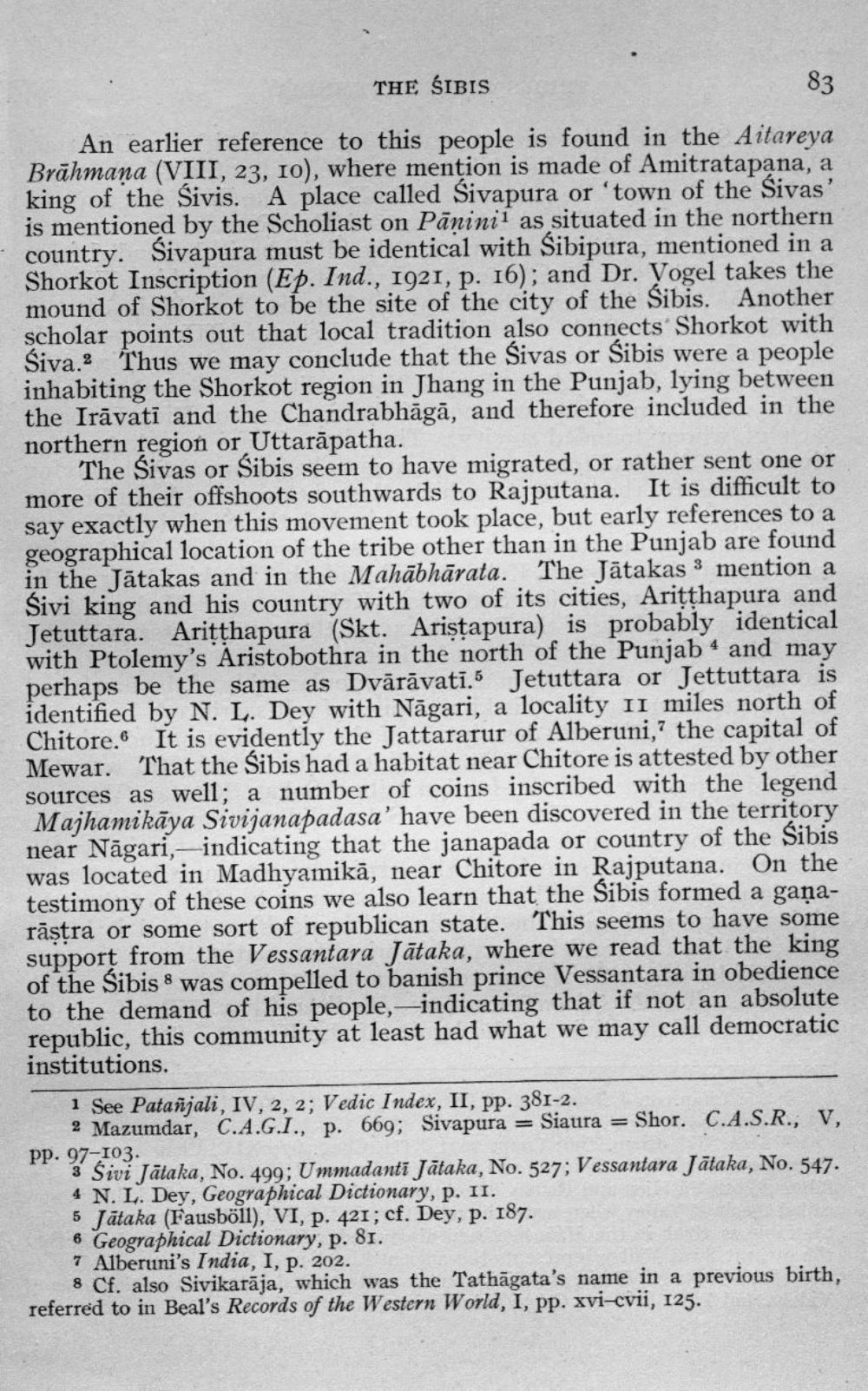________________
THE SIBIS
83
An earlier reference to this people is found in the Aitareya Brāhmana (VIII, 23, 10), where mention is made of Amitratapana, a king of the Sivis. A place called Sivapura or 'town of the Sivas' is mentioned by the Scholiast on Pāninií as situated in the northern country. Sivapura must be identical with Sibipura, mentioned in a Shorkot Inscription (Ep. Ind., 1921, p. 16); and Dr. Vogel takes the mound of Shorkot to be the site of the city of the Sibis. Another scholar points out that local tradition also connects Shorkot with Siva. Thus we may conclude that the Sivas or Śibis were a people inhabiting the Shorkot region in Jhang in the Punjab, lying between the Irāvati and the Chandrabhāgā, and therefore included in the northern region or Uttarāpatha.
The Sivas or Sibis seem to have migrated, or rather sent one or more of their offshoots southwards to Rajputana. It is difficult to say exactly when this movement took place, but early references to a geographical location of the tribe other than in the Punjab are found in the Jātakas and in the Mahābhārata. The Jätakas 3 mention a Śivi king and his country with two of its cities, Ariţthapura and Jetuttara. Aritthapura (Skt. Aristapura) is probably identical with Ptolemy's Aristobothra in the north of the Punjab 4 and may perhaps be the same as Dvārāvati.5 Jetuttara or Jettuttara is identified by N. L. Dey with Nāgari, a locality II miles north of Chitore. It is evidently the Jattararur of Alberuni, the capital of Mewar. That the Sibis had a habitat near Chitore is attested by other sources as well; a number of coins inscribed with the legend Majhamikāya Sivijanapadasa' have been discovered in the territory near Nāgari,-indicating that the janapada or country of the Sibis was located in Madhyamikā, near Chitore in Rajputana. On the testimony of these coins we also learn that the Sibis formed a ganarāştra or some sort of republican state. This seems to have some support from the Vessantara Jātaka, where we read that the king of the Sibis 8 was compelled to banish prince Vessantara in obedience to the demand of his people,-indicating that if not an absolute republic, this community at least had what we may call democratic institutions.
1 See Patañjali, IV, 2, 2; Vedic Index, II, pp. 381-2.
2 Mazumdar, C.A.G.I., p. 669; Sivapura = Siaura = Shor. C.A.S.R., V, Pp. 97
3 Sivi Jātaka, No. 499; Ummadantī Jātaka, No. 527; Vessantara Jātaka, No. 547. 4 N. L. Dey, Geographical Dictionary, p. II. 5 Tātaka (Fausböll), VI, p. 421; cf. Dey, p. 187. 6 Geographical Dictionary, p. 81. 7 Alberuni's India, I, p. 202.
8 Cf. also Sivikarāja, which was the Tathāgata's name in a previous birth, referred to in Beal's Records of the Western World, I, pp. xvi-cvii, 125.




